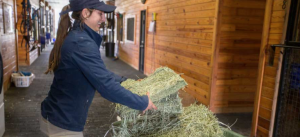 The Importance of Weighing Feed: How many times have you had to describe your horse’s ration and found yourself saying, “He gets a scoop of this and a scoop of that”? Most horse owners describe diets this way. However, there are many disadvantages to measuring your horse’s feed amounts in “scoops” rather than weight.
The Importance of Weighing Feed: How many times have you had to describe your horse’s ration and found yourself saying, “He gets a scoop of this and a scoop of that”? Most horse owners describe diets this way. However, there are many disadvantages to measuring your horse’s feed amounts in “scoops” rather than weight.
Why Weigh?
To determine dietary requirements, horse characteristics are first considered. These include age, breed, workload, metabolism, and weight. For example, for optimum digestive health each horse requires at least 1% of its body weight in forage every day. That would be at least 5 kg (11 lb) for a 500-kg (1,100-lb) horse. Do you have a horse that is restricted from pasture or has access to very little pasture? It is important to know how much hay he is receiving. Establish if he is receiving adequate forage. This is especially true if you are looking to substitute hay as a forage source
Experienced nutritionists have formulated these in accordance with characteristics of certain classes of horses, including their weight. When looking at fortified feeds. They then recommend a minimum amount of the feed that each type of horse requires to meet its specific nutrient requirements. Based on the formulations.
Therefore, by weighing feeds you know exactly how much your horse is getting daily. In addition, if your horse is receiving a balanced diet and meeting requirements for forage and the nutrients that are important for achieving optimum health, development, and performance.
Weighing feed leads to peace of mind that your horse is meeting its nutrient requirements. Feed costs can be cut often. Determine how much of each feed is required. The need for expensive vitamin and mineral supplements is decreased when a fortified feed is fed at the correct amount daily.
Weight vs. Volume
In any given feed room, you are likely to come across a wide variety of measuring utensils. Open scoops, dippers, ice cream containers, tins, jars, and bowls are commonly used to convey feed to the trough. Each may hold a different volume of feed.
Equine nutrition consultants often hear from horse owners that they use a 1-kg (2.2-lb) scoop. Due to different feeds having different densities, this is hardly accurate. A scoop of chaff has the same volume as the same scoop of pellets or muesli (textured feed). However, the varying densities of these feeds means that they weigh very different amounts. A 2-litre (1/2-gallon) scoop of a pelleted feed may weigh up to 1.5 kg (3 lb), whereas that same 2-litre scoop of lucerne (alfalfa) chaff will weigh much less.
Method of Weighing
Accurately and conveniently feeds may be weighed. Use common types of scales. A hook scale, like those used for weighing fish or luggage, is easily used to weigh hay or haylage. By hanging the haynet or hay bag off the scale. If you’re not using a net or bag, then a bundle of hay may be tied up with twine then hung from the scale.
Feeds may be weighed in a similar manner. Do so by using an empty pail or bag as a receptacle to hang from the scale. Simply fill your scoop with feed or grain and then empty it into the bag before hanging the bag on the scale. In this manner, you can determine the weight of all feedstuffs in each of the scoops you normally use. Be sure to take into account the weight of the bag or net. This is achieved by weighing that first and subtracting this amount from the final reading.
If a flat platform scale is your available weighing device, then weighing feeds and cereals may be accomplished by using the scoop or a pail as a receptacle. First, weigh your scoop or pail and note the weight of the container or press “tare” on the scales if they are electronic. Then, fill the scoop with feed. Weigh again or empty into the pail already on the scale to weigh the contents. The weight displayed should be the weight of only the feed contained within the scoop or pail. For electronic scales with a tare function.
Other Scales:
For other scales, you may have to manually subtract the weight of the container from the total amount of feed and container combined. In order to weigh hay on a platform scale, you may need a larger platform. A piece of rigid cardboard or wood may work well for this. Be sure to zero the scale or note the weight of the platform before placing the hay atop it. Then, simply balance the portion of hay or haylage you wish to measure on the platform and note the weight displayed. Again, this depends on whether or not the scale is electronic. The amount displayed will be the weight of the forage or the forage and platform combined.
Hay and feed shouldn’t require weighing each time you feed your horse. You can simply estimate how many sections of hay your horse requires daily by determining the average weight of a section of each batch of hay you get. Feed amounts can be determined by knowing approximately how much a scoop of each foodstuff in your horse’s diet weighs.
Would you like more information about the The Importance of Weighing Feed? Contact us at J & J Hay Farms by clicking here!
Article brought to you by KER.

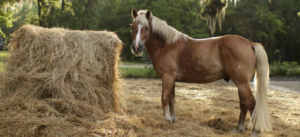 Use of Round Bales for Horses: The unpredictable weather and barren pastures of winter complicate forage-feeding for horse owners. Because of this, many rely on round bales to provide necessary forage.
Use of Round Bales for Horses: The unpredictable weather and barren pastures of winter complicate forage-feeding for horse owners. Because of this, many rely on round bales to provide necessary forage.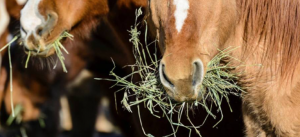 Alfalfa and a Healthy Gastric Environment in Horses: Experts suggest that feeding alfalfa (lucerne) reduces the incidence and severity of gastric ulcers in the upper region of the stomach, known also as equine squamous gastric disease. Alfalfa hay has a well documented buffering capacity. However, new research shows that horses in heavy work need more than alfalfa to maintain a healthy gastric environment.
Alfalfa and a Healthy Gastric Environment in Horses: Experts suggest that feeding alfalfa (lucerne) reduces the incidence and severity of gastric ulcers in the upper region of the stomach, known also as equine squamous gastric disease. Alfalfa hay has a well documented buffering capacity. However, new research shows that horses in heavy work need more than alfalfa to maintain a healthy gastric environment.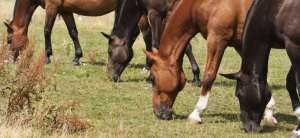 Feeding Horses: Don’t Miss the Forage for the Feed. Conscientious horse owners know the importance of forage. That is why many hours are spent selecting hay and caring for paddocks, pastures, and other grazing areas. In addition to forage, most horses require the nutrients found in a concentrate for optimal well-being. As a result, that concentrate is often chosen based on the forage available.
Feeding Horses: Don’t Miss the Forage for the Feed. Conscientious horse owners know the importance of forage. That is why many hours are spent selecting hay and caring for paddocks, pastures, and other grazing areas. In addition to forage, most horses require the nutrients found in a concentrate for optimal well-being. As a result, that concentrate is often chosen based on the forage available.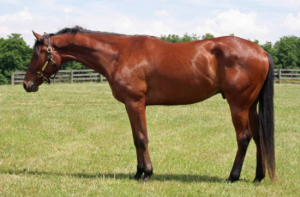 This is Griffith, a four-year-old appendix-bred Quarter Horse gelding. He stands 16.2 (168 cm) and currently weighs 1,260 lb (574 kg).
This is Griffith, a four-year-old appendix-bred Quarter Horse gelding. He stands 16.2 (168 cm) and currently weighs 1,260 lb (574 kg).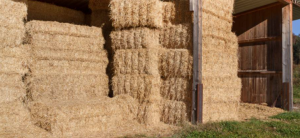 10 Tips for Purchasing Horse Hay: Most horsemen buy hay based on the type of horse being fed. The way it looks, smells, and feels also come into play. These are qualitative factors, and they are important. When appraising hay, keep in mind the following 10 points:
10 Tips for Purchasing Horse Hay: Most horsemen buy hay based on the type of horse being fed. The way it looks, smells, and feels also come into play. These are qualitative factors, and they are important. When appraising hay, keep in mind the following 10 points: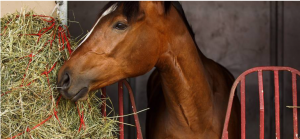 Haynet Height: Consider Comfort of Horses. Horsemanship masters and mavens of yesteryear taught their students to hang haynets high and tight. Low-slung haynets invited injury, the experts cautioned.
Haynet Height: Consider Comfort of Horses. Horsemanship masters and mavens of yesteryear taught their students to hang haynets high and tight. Low-slung haynets invited injury, the experts cautioned.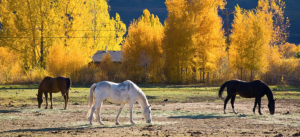 How to Let Your Horse Down in the Off-Season: The final show of the year is over. You drive back to the barn, unload your horse, and hang up your championship ribbon. Now you’re planning to give your horse a well-earned rest.
How to Let Your Horse Down in the Off-Season: The final show of the year is over. You drive back to the barn, unload your horse, and hang up your championship ribbon. Now you’re planning to give your horse a well-earned rest.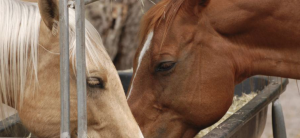 Why is Feeding Frequency Important in Horse Management? According to historical accounts, when horses were used daily for transportation, work, and war, their caretakers would feed their charges no fewer than four times a day.
Why is Feeding Frequency Important in Horse Management? According to historical accounts, when horses were used daily for transportation, work, and war, their caretakers would feed their charges no fewer than four times a day.